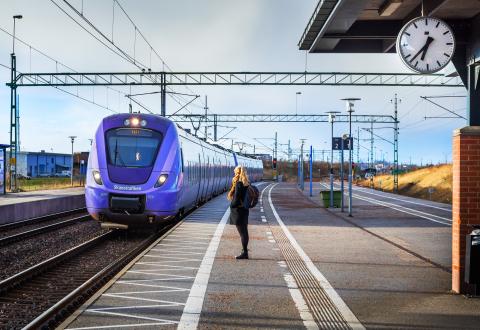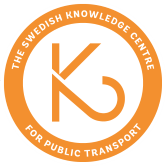Article highlighted
More off-peak departures lead to patronage growth – even during peak hours

Joel Hansson from Lund University has successfully defended his thesis that highlights how public transport planning is a balancing act between various trade-offs, regarding for example stop spacing or how departures should be distributed during peak hours and periods of lower travel demand.
– On the one hand, it is valid to invest in public transport where there is potential for high levels of patronage. Thus, it may seem reasonable to add departures during peak hours rather than when fewer people travel. On the other hand, it is important that public transport is available to everyone, even for those who need to travel in the middle of the day or in the evening, says Joel Hansson.
Interestingly, Joel’s thesis shows that the trade-offs that public transport planners need to decide on are often more complex than they seem. For example, it appears that off-peak service improvements result in substantial patronage growth even if patronage is low on the specific departures that have been added. This was evident in a study of the long-term patronage effects on four regional public transport services in Skåne where substantial off-peak service improvements had been introduced some years earlier.
– Patronage increased significantly even during peak hours after some gaps in the timetable were filled, so that consistent hourly services could be offered from morning to evening. Making the service available throughout the day seems to be valued even by passengers who do not normally use the off-peak services, Joel Hansson explains.
– It is easy to assume that more frequent departures during peak hours is the most efficient way to ensure high patronage. However, trips with just a few passengers may not be as costly as one might think. Quite the opposite, it seems that these trips are of great importance for the overall public transport patronage, Joel continues.
The question remains as to why travelers seem to value the off-peak services even though they do not normally use them. One explanation could be that it provides a sense of security to know that public transport can be relied on should one need to deviate from usual travel times.
Significant differences between regional and local public transport
Previous research on public transport service planning has largely focused on local services within urban areas. Joel’s thesis highlights the regional perspective and shows that there are significant differences in conditions that affect the trade-offs that are at the core of public transport planning.
– There is a risk for overgeneralization when applying recommendations from local to regional public transport. There are important differences between the regional and local perspective that must be taken into account, says Joel Hansson.
– For example, many stops in rural areas are used significantly less often than stops in urban areas, which means that the effects of rural stops on the service as a whole are not so much about travel time as about reliability, says Joel.
Important to consider when evaluating public transport
- The study shows that the patronage effects of increased supply during off-peak hours are not immediate. It is important to be persistent when evaluating investments in off-peak services.
- Individual departures should not be evaluated only based on the patronage on that departure alone. Even if there are seemingly empty departures, removing them may have major consequences, according to the study.
- Better supply outside peak hours can be a cost-effective measure for both increased patronage and for providing better opportunities for people to use public transport outside normal work and school hours.
Joel Hansson is a researcher at Lund University and K2. On October 14 Joel defended his dissertation Regional public transport: The balancing act of service planning.
